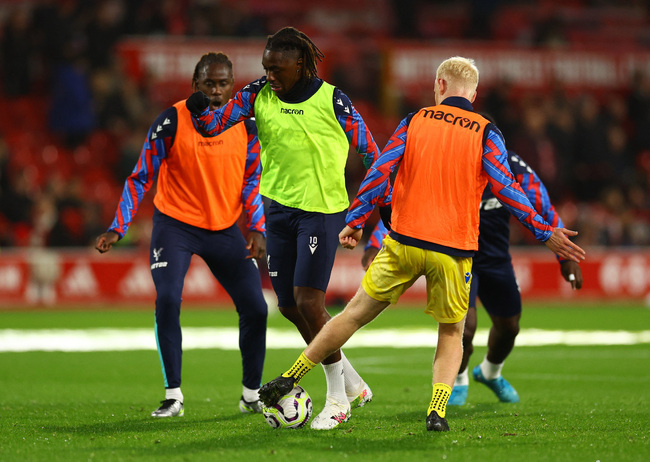Opening the Kinetic Chain Box
Open kinetic chain knee extension continues to grab the attention of clinicians globally. Eurico Marques unpacks the clinical implications of introducing knee extensions in ACL rehabilitation and provides clinicians with evidence-based guidelines.
LA Galaxy forward Joseph Paintsil receives treatment after a challenge in the second half against Inter Miami CF at Dignity Health Sports Park. Mandatory Credit: Jayne Kamin-Oncea-USA TODAY Sports.
Anterior cruciate ligament (ACL) injuries have a devasting impact on an athlete’s quality of life and physical activity levels. In the short term, quadriceps weakness and pain are ubiquitous(1). Moreover, less than half of athletes meet quadriceps strength symmetry goals when cleared to return to sports (RTS)(2,3). Furthermore, muscle quality and morphology differences following injury persist despite ACL reconstruction (ACLR) and extensive rehabilitation(4). Restoring quadricep muscle strength is integral to recovery following ACLR, and open kinetic chain exercises (OKC) should play a role(5).
The re-injury risk following ACLR is four times higher for up to two years for athletes wanting to return to high-level sports(6). However, if clinicians delay their return until they have better quadricep strength and symmetry, their re-injury risk decreases significantly(6). Therefore, clinicians must educate athletes on the importance of an extensive rehabilitation program that includes time-based and functional criteria to reduce re-injury and post-traumatic knee osteoarthritis risk and improve long-term function(6,7). Furthermore, this reduces the burden of long-term healthcare costs.
When designing ACLR rehabilitation programs, clinicians must consider tissue healing time frames, particularly with the graft and the harvesting site. The first six to twelve weeks are critical as the graft is most vulnerable to loosening or overstretching during this period(8). Furthermore, graft type (i.e., patellar tendon and hamstring tendon) affects the laxity risk(8). For example, patellar grafts appeared less vulnerable to the early introduction of OKC knee extension at two, four, six, or twelve weeks post-op despite different protocols, exercise dosages, and progression rates(8).
On the contrary, hamstring grafts have inconsistent results(8). Initiating OKC exercises at week four but limiting ROM between 45-90° of knee flexion until the 12 weeks shows no difference in laxity at follow-up(9). Meanwhile, initiating OKC exercises at four weeks and progressing to full knee exercises at six weeks demonstrates increased laxity(8). However, the results were below the clinically meaningful threshold(8). Despite the apparent clinical insignificance of the increased laxity, it still presents clinicians with a puzzle, as many view any laxity as too much. One challenging aspect of the current evidence pool is the lack of data on the re-rupture rates and adverse outcomes.
The femoral and tibial fixation tunnels are the weak links immediately following surgery. A patellar tendon autograft takes six to eight weeks to incorporate into the tunnels, while soft tissue autografts can take eight to 12 weeks. During the first two to four weeks post-surgery, the graft weakens, then revascularizes and matures progressively over several weeks, increasing its tensile strength. Incorporation and maturation take longer in allografts than in autografts. Therefore, clinicians may need to be more cautious with athletes who undergo allograft reconstruction regarding their rehabilitation and RTS. Clinicians must consider tissue healing, graft incorporation and maturation, and the differences in the graft source when designing rehabilitation programs(10).
Anterior cruciate ligament rehabilitation includes three criterion-based postoperative phases. Namely, impairment-based, sport-specific training, and return to sports. During rehabilitation, exercise selection remains contentious, particularly open kinetic chain vs. closed kinetic chain (CKC) knee extension(11).
You need to be logged in to continue reading.
Please register for limited access or take a 30-day risk-free trial of Sports Injury Bulletin to experience the full benefits of a subscription. TAKE A RISK-FREE TRIAL
TAKE A RISK-FREE TRIAL
Newsletter Sign Up
Subscriber Testimonials
Dr. Alexandra Fandetti-Robin, Back & Body Chiropractic
Elspeth Cowell MSCh DpodM SRCh HCPC reg
William Hunter, Nuffield Health
Newsletter Sign Up
Coaches Testimonials
Dr. Alexandra Fandetti-Robin, Back & Body Chiropractic
Elspeth Cowell MSCh DpodM SRCh HCPC reg
William Hunter, Nuffield Health
Be at the leading edge of sports injury management
Our international team of qualified experts (see above) spend hours poring over scores of technical journals and medical papers that even the most interested professionals don't have time to read.
For 17 years, we've helped hard-working physiotherapists and sports professionals like you, overwhelmed by the vast amount of new research, bring science to their treatment. Sports Injury Bulletin is the ideal resource for practitioners too busy to cull through all the monthly journals to find meaningful and applicable studies.
*includes 3 coaching manuals
Get Inspired
All the latest techniques and approaches
Sports Injury Bulletin brings together a worldwide panel of experts – including physiotherapists, doctors, researchers and sports scientists. Together we deliver everything you need to help your clients avoid – or recover as quickly as possible from – injuries.
We strip away the scientific jargon and deliver you easy-to-follow training exercises, nutrition tips, psychological strategies and recovery programmes and exercises in plain English.






